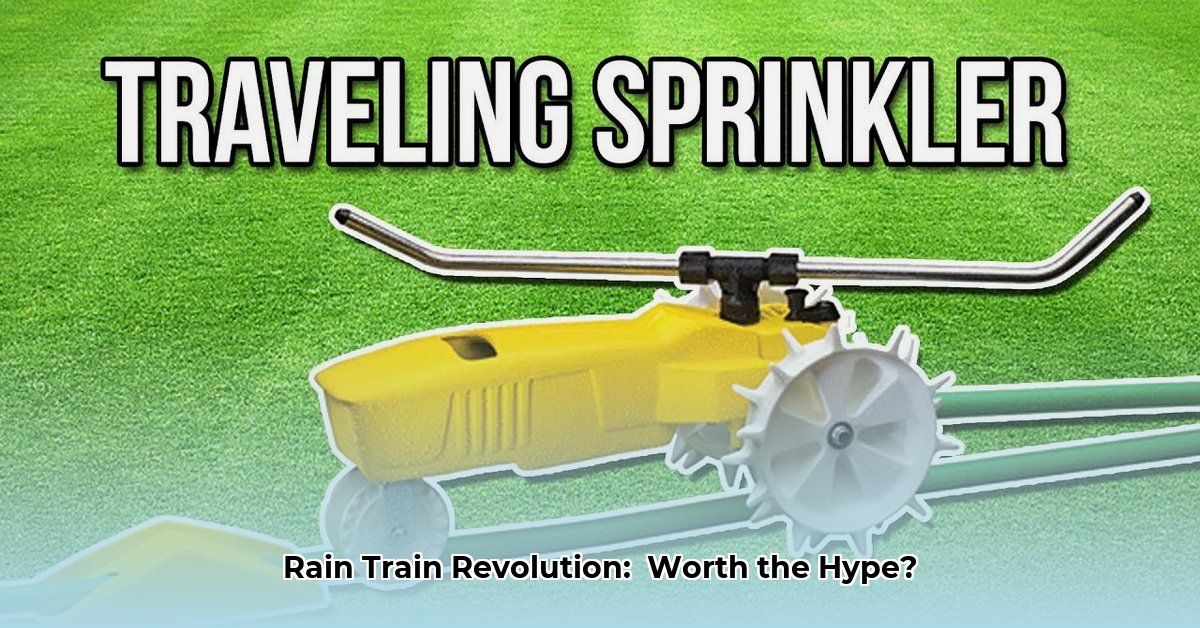
Want a perfectly watered lawn without the hassle? The Nelson Rain Train traveling sprinkler is a popular option, but is it the right choice for you? This review provides a thorough evaluation and a step-by-step guide to setup, use, and maintenance, helping you decide if this sprinkler suits your needs. For more sprinkler options, check out other models here.
Features & Specifications
The Nelson Rain Train boasts impressive specifications, designed for large-scale irrigation. However, its size and weight are significant factors to consider.
| Feature | Specification | Notes |
|---|---|---|
| Coverage Area | 13,500 sq ft | Advertised; actual coverage may vary depending on terrain and water pressure. |
| Travel Distance | Up to 200 ft | Dependent on water pressure and terrain. |
| Speed Settings | Three | Allows for customization of watering speed. |
| Material | Cast iron, powder-coated | Durable but heavy (19.4 lbs), impacting portability. |
| Weight | 19.4 lbs | Consider this weight when choosing your sprinkler. |
Performance Review
The Nelson Rain Train's performance is a mixed bag. While it promises extensive coverage (13,500 sq ft), user feedback suggests uneven watering, particularly on uneven terrain. This uneven distribution is likely due to variations in water pressure across the large coverage area. The advertised chip-resistant coating needs further testing to verify its long-term durability. The adjustable speed settings offer control over watering speed but don't completely solve the uneven watering issue in challenging terrains.
User Guide/Instructional Section
For optimal results, follow these instructions:
Preparation: Ensure adequate water pressure and clear the area of obstacles. Sufficient water pressure is critical for even distribution across the entire coverage area.
Setup: Securely attach the sprinkler to your hose. Place it at the starting point, ensuring ample space for travel. Select a speed setting, potentially experimenting for best results in your specific lawn. Ensure the base is leveled for consistent water distribution.
Watering: Turn on the water and monitor coverage. Adjust positioning or speed settings if uneven watering occurs. Even if the water pressure is adequate, adjusting positioning can improve water distribution.
Post-Watering Care: Rinse the sprinkler to remove debris, and then drain it thoroughly before storing in a sheltered place. Regular visual inspections for wear or coating damage are recommended. Proper storage and cleaning extend the lifespan of your sprinkler.
Troubleshooting
Uneven Watering: Check water pressure; low pressure is a common cause. Experiment with speed settings and consider supplemental watering for particularly difficult areas. Uneven terrain may require additional watering solutions.
Malfunction: Inspect connections for leaks or blockages. Replace faulty components as needed. Understanding the inner workings of your sprinkler can aid in troubleshooting.
Weather Damage: Store the sprinkler indoors during storms. Protecting your investment from inclement weather is essential.
Comparison to Alternatives
The Nelson Rain Train excels for large, relatively flat lawns with good water pressure. However, for smaller yards, uneven terrain, or users with limited physical strength, more maneuverable or targeted sprinkler systems may be more appropriate. Many alternative sprinkler systems are available on the market, offering varying features and functionalities.
Conclusion
The Nelson Rain Train is a powerful sprinkler ideal for large, flat lawns with adequate water pressure. Its weight and potential for uneven watering on uneven ground are key considerations. If you have a smaller yard, physical limitations, or a significantly uneven lawn, explore lighter, more maneuverable alternatives. Always consider the specifics of your lawn and your needs when selecting a sprinkler system. The Nelson Rain Train sprinkler's suitability is highly dependent on your specific lawn characteristics.